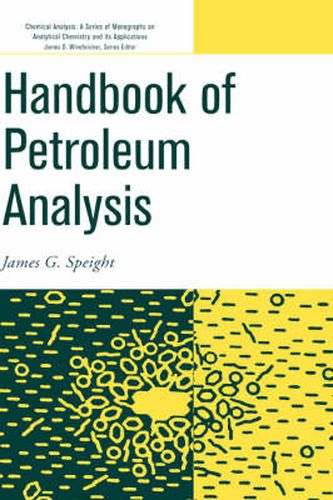Readings Newsletter
Become a Readings Member to make your shopping experience even easier.
Sign in or sign up for free!
You’re not far away from qualifying for FREE standard shipping within Australia
You’ve qualified for FREE standard shipping within Australia
The cart is loading…






Petroleum exhibits a wide range of physical properties. Numerous tests have been and continue to be developed to provide an indication of the means by which a particular feedstock should be processed. An initial inspection of the nature of petroleum provides deductions about the most logical means of refining and classifying. Handbook of Petroleum Analysis is a single, comprehensive source that describes the application and interpretation of data resulting from various test methods for petroleum feedstocks and products. The need for the application of analytical techniques to petroleum has increased over the past three decades due to changes in feedstock composition. Handbook of Petroleum Analysis deals with the various aspects of petroleum analysis, while providing a detailed explanation of the necessary standard tests and procedures that are applicable to feedstocks. The material also reviews the application of new methods for determining instability and incompatibility, focusing on the analytical methods related to environmental regulations. Most importantly, the book provides details of the meanings of the various test results and how they might be applied to predict feedstock behaviour. Where pertinent, new tests that are not yet accepted as standardized are described. Topics covered in Handbook of Petroleum Analysis include: chemical composition; physical, thermal, electrical, and optical property testing methods; spectroscopic, chemical, fractionation, and chromatographic methods; molecular weight; and use of the data (i.e., mapping and predictability). Handbook of Petroleum Analysis promotes a better understanding of the criteria affecting the quality of petroleum and petroleum products and is a valuable resource for chemists and engineers in the refining industry.
$9.00 standard shipping within Australia
FREE standard shipping within Australia for orders over $100.00
Express & International shipping calculated at checkout
Stock availability can be subject to change without notice. We recommend calling the shop or contacting our online team to check availability of low stock items. Please see our Shopping Online page for more details.
Petroleum exhibits a wide range of physical properties. Numerous tests have been and continue to be developed to provide an indication of the means by which a particular feedstock should be processed. An initial inspection of the nature of petroleum provides deductions about the most logical means of refining and classifying. Handbook of Petroleum Analysis is a single, comprehensive source that describes the application and interpretation of data resulting from various test methods for petroleum feedstocks and products. The need for the application of analytical techniques to petroleum has increased over the past three decades due to changes in feedstock composition. Handbook of Petroleum Analysis deals with the various aspects of petroleum analysis, while providing a detailed explanation of the necessary standard tests and procedures that are applicable to feedstocks. The material also reviews the application of new methods for determining instability and incompatibility, focusing on the analytical methods related to environmental regulations. Most importantly, the book provides details of the meanings of the various test results and how they might be applied to predict feedstock behaviour. Where pertinent, new tests that are not yet accepted as standardized are described. Topics covered in Handbook of Petroleum Analysis include: chemical composition; physical, thermal, electrical, and optical property testing methods; spectroscopic, chemical, fractionation, and chromatographic methods; molecular weight; and use of the data (i.e., mapping and predictability). Handbook of Petroleum Analysis promotes a better understanding of the criteria affecting the quality of petroleum and petroleum products and is a valuable resource for chemists and engineers in the refining industry.